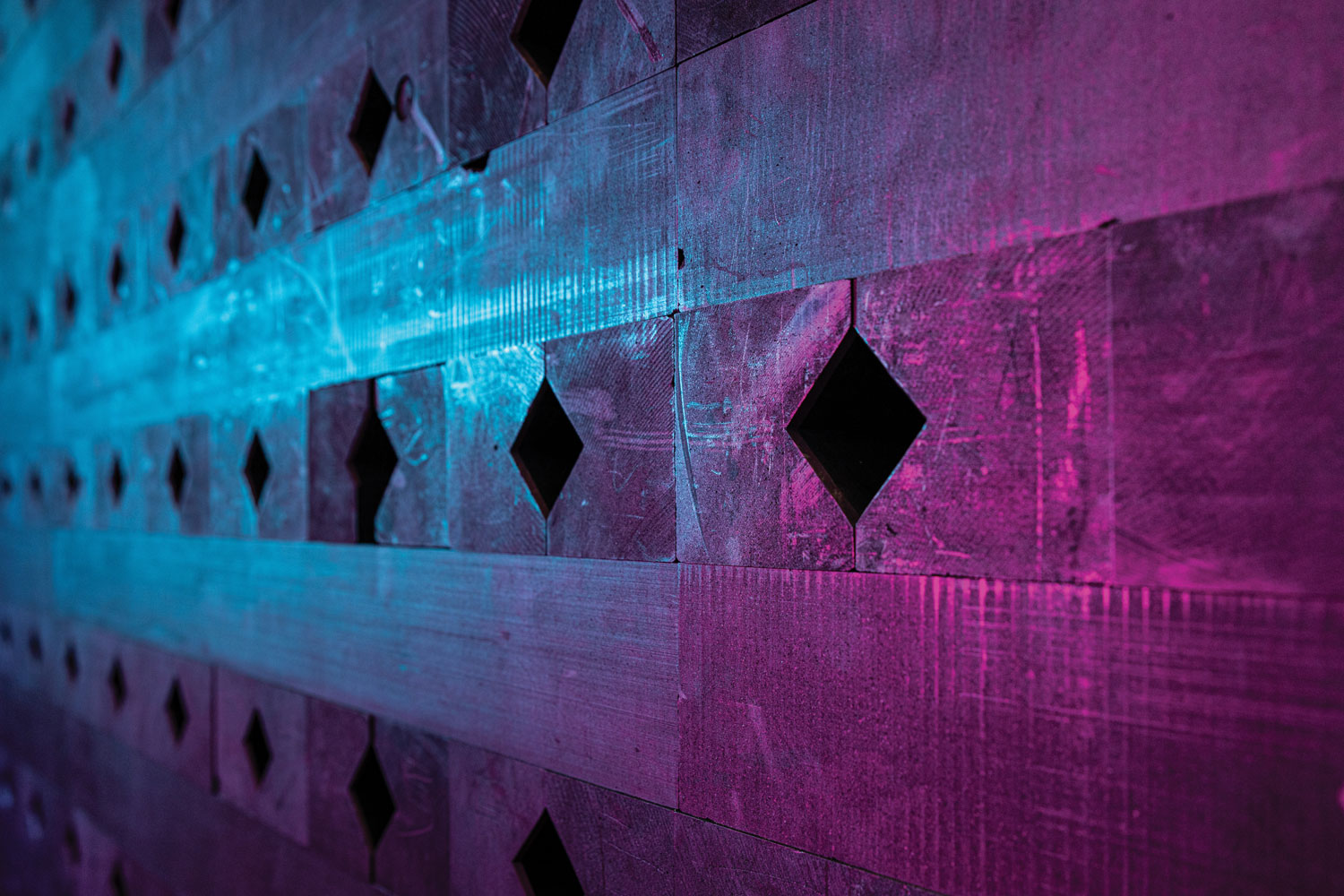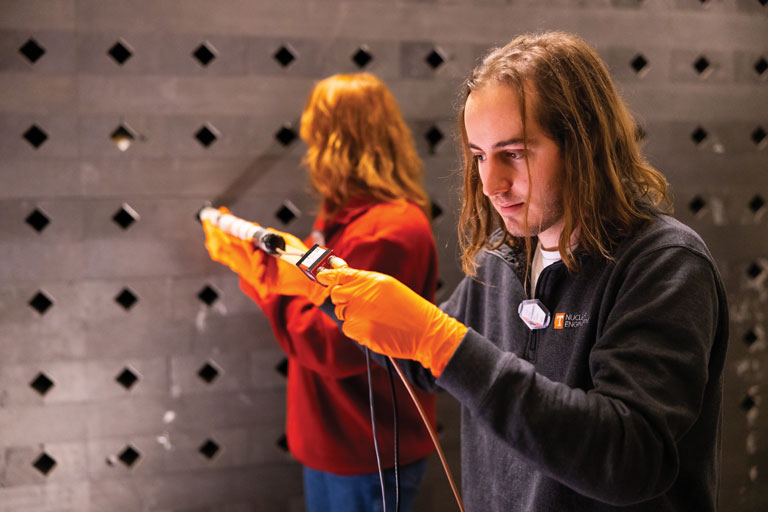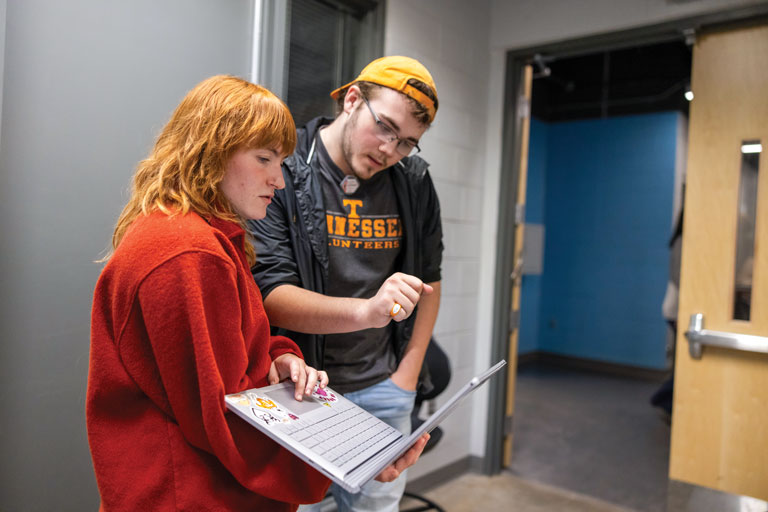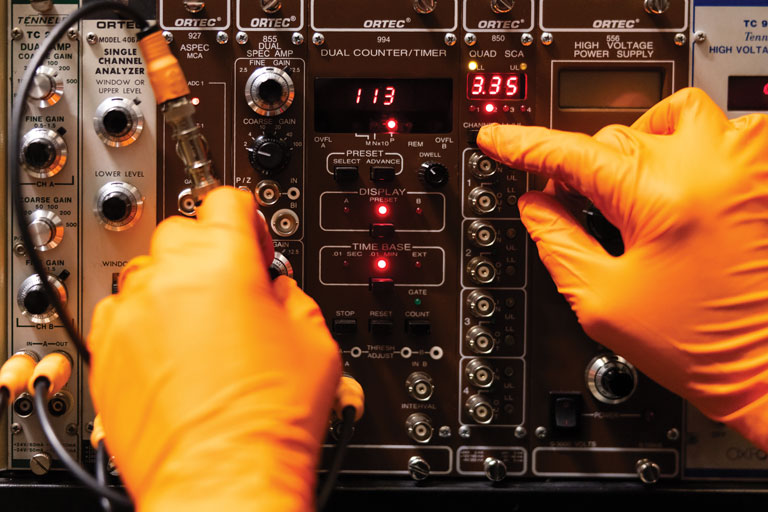Undergraduate Nuclear Engineers Gain Practical Experience with UT’s Historic Graphite Pile
In the bowels of the Zeanah Engineering Complex stands a 10-foot-tall graphite monolith punctured regularly with dozens of diamond-shaped channels. An undergraduate engineering student sinks a sensor rod into one of the voids, joining a class of thousands that stretches back generations.
“This graphite pile is one of the incredible facilities that puts our students on track for a successful career in nuclear engineering,” said Sandra Bogetic, an assistant professor in the Department of Nuclear Engineering, who guides up to 50 seniors in studying the pile each year. “The students get to work with a graphite pile almost exactly like the ones they’ve seen in pictures from the ’40s.”
Last fall, after spending nearly 60 years in the Radiological Safety Building behind UT Medical Center, the graphite pile was moved to a concrete-shielded room in the basement of ZEC, the Tickle College of Engineering’s newest building.

The pile’s convenient new location matches the upgraded curriculum of Bogetic’s class. Bogetic, who holds three graduate degrees in nuclear engineering, helped modernize the course when she joined the department in 2021.
“I drew on my experience to give the students a clearer understanding of how neutrons behave, move, and perform inside various materials and reactors,” she said.
Every fall, Bogetic guides her students through weeks of theory and modeling as they solve diffusion equations, then use industry-standard neutron transport codes to model the paths of neutrons through the graphite blocks.
Then it’s time for Bogetic to load in a neutron source—a rod of plutonium and beryllium, which emits a high count of neutrons but very few gamma rays—and let the students validate their models with their own measurements.
Over the next week, students in Bogetic’s class take measurements with a helium-3 detector, sliding the sensor deep into the slots in the graphite pile.
“The graphite pile provides our students with a unique hands-on opportunity to understand how neutrons scatter and ‘slow down’ in moderating materials like graphite,” Bogetic said. “It shows them how to compare experiments to models and understand the errors that arise in both; it helps them see the entire picture.”
That holistic understanding prepares Bogetic’s class for the varied domains within nuclear engineering, including reactor design and research, nuclear safeguarding, medical research and treatment, and even space applications.
Having performed research overseas and at the University of California, Berkeley, I can confidently say that our NE students exceed international expectations. They see how the theory, computational predictions, and experiments interact. That ability is the very nature of engineering. It’s priceless.”
With the pile now housed in the same building as the NE offices and laboratories, Bogetic hopes it will be possible to integrate it into more courses—and potentially add it to the department’s roster of research equipment.
“I came to UT in part because of the experimental facilities here,” she said. “In the coming years, we will have the Fact Neutron Source and the Accelerator Research Center, which are very unique and impressive for a university to have. Now that the graphite pile is in ZEC, we could expand its use by adding more neutron sources and using it to study new neutron detectors.”
While it currently supports instructional use only, the graphite pile is already benefiting Bogetic’s lab by changing the way her undergraduate researchers approach their work.
“Having performed research overseas and at the University of California, Berkeley, I can confidently say that our NE students exceed international expectations,” she said. “They see how the theory, computational predictions, and experiments interact. That ability is the very nature of engineering. It’s priceless.”




